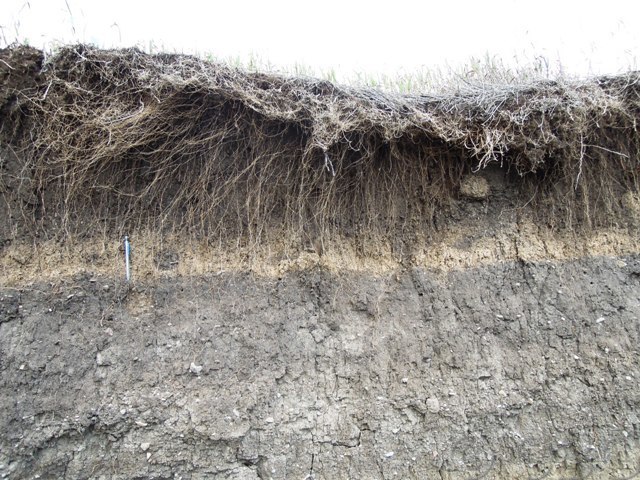Other processes
Phenomena
Pothole - caldron, cistern, tank, tinaja, waterpocket, weathering pit (Svalbard) - is a result of combination of physical and chemical weathering and fluvial and aeolian erosion. Orange colour is caused by cyanobacteria.
Earth pyramids (USA) - are formed by water and wind erosion in the unconsolidated sediments. They are formed in volcanic ash on this picture. The volcanic ash is covered by glacifluvial deposits and resistant basaltic lava flow (prismatic structures forming the surface.
Earth pyramids - tent rocks, hoodoos (USA) - typical earth shapes of badlands. Earth pyramids are formed in the unconsolidated or partly consolidated sediments. They are result of water and wind erosion. More resistant rock usually sits on the top of the pyramid and the surface wash erodes the walls of pyramid. Earth pyramids are common in the arid and semi-arid conditions, but can emerge in the till as well. On the picture the main material of the pyramid is tuff (consolidated volcanic ash), fluvial and eolian sand.

Bioturbation (USA) - animals living in the ground can act as a soil-forming process. The material from underlying or overlying layers can fill their burrows and dens. The soil horizons are thus mixed. (Note the black circle – infilled burrow – next to the pen in the light-coloured layer and the light-coloured circle in the dark brown layer in the upper right of the picture.
Grus (USA) - an accumulation of angular and coarse-grained sand and gravel particles, formed as a result of chemical and physical weathering of crystalline rocks (granite in this example).
Corestone (USA) - result of spheroidal weathering. This weathering is a type of chemical weathering that affects the jointed bedrock. Typical on granites. When the saprolite (the product of deep underground spherical weathering) is exposed by erosion, the concentric layers peels like an onion and form the rounded corestone.
Impact crater (USA) - is usually circular depression with raised rims. Impact craters are formed by the hypervelocity impact of meteorite or other solid body to the planetary surface.
Physical and chemical weathering (USA) - these cellular microforms are formed by the chemical and physical weathering on the sandstone rock surface.
Weathering rate (USA) - you can see how the different rate of chemical and physical weathering affects the slopes. Note the almost vertical walls of sandstone rocks and flat surface with developed scree on the limestone rock layers. In semi-arid conditions of Grand Canyon the sandstone rocks (red) are more resistant than the underlying limestone rocks.